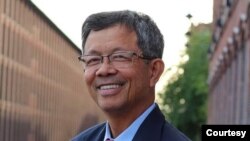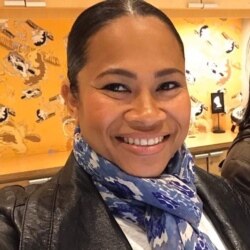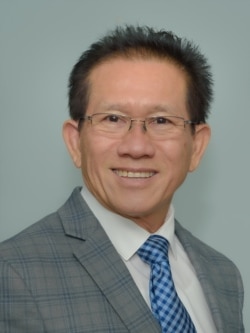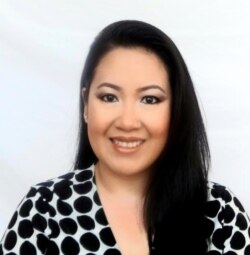For many Cambodians, racial discrimination was an unanticipated part of their experience as new Americans.
Vesna Nuon arrived in the U.S. in 1982 after surviving the brutal Khmer Rouge reign under Pol Pot that killed 1.7 million people, or about a quarter of Cambodia’s population, between 1975 and 1979.
He recalls some Americans, including students at his Boston high school, were less than welcoming. “I was not only verbally harassed to go back to my country, but also during lunch breaks they spat in my food. I told cafeteria staff who were monitoring the area, but they turned a blind eye and deaf ear to me,” he told VOA Cambodian.
At the time, many Americans grouped Cambodians “with Vietnamese, and because they had lost relatives in the Vietnamese war, they threw their anger at us,” said Vesna Nuon, 54, now a city council member in Lowell, Massachusetts. The former mill town is now home to the second-largest Cambodian community in the U.S. after Long Beach, California.
Joining the wave of Vietnamese refugees who fled to the U.S. after the fall of Saigon in 1975, Cambodians arrived over the next 20 years until there were about 1 million refugees from Southeast Asia, included Laotians and Hmong, in the U.S. It was, according to the International Rescue Committee, the largest resettlement effort in the U.S. until that time.
Vesna Nuon and his family arrived in the same year the U.S. Census announced that the 1980 count had found Asians were the fastest-growing ethnic group in the nation.
That year, 1982, was also the year when two out-of-work Detroit autoworkers upset by the advances of Japanese carmakers into the U.S. market beat Vincent Chen, a Chinese immigrant, with a baseball bat. Convicted of manslaughter, the autoworkers were sentenced to three years’ probation and ordered to pay a $3,000 fine. The case “forced Asian Americans into the civil rights discourse,” Roland Hwang, co-founder and former president of American Citizens for Justice, told NBC News.
Increasingly wary
Many Cambodians have become increasingly wary as anti-Asian attacks have increased. Stop AAPI Hate, a nonprofit that tracks incidents of discrimination, hate and xenophobia against Asian Americans and Pacific Islanders in the United States, has recorded nearly 3,800 Asian racism cases between March 19, 2020 — shortly after the global COVID-19 pandemic was announced — and February 28, 2021. Those cases include verbal harassment, shunning and physical assault.
On March 16, a 21-year-old white man shot and killed eight people at three spas in Atlanta, Georgia. Six of the victims were Asian women.
In other cities, such as San Francisco and New York, Asians were attacked on the street.
One Cambodian woman, an operations manager for a nonprofit in New York City, told VOA Cambodian she has experienced discrimination since she arrived in the U.S. five years ago.
“I have been catcalled, sometimes as I was walking home [from work]. Mostly, it was men of kinds of nationalities, they catcalled me. Sometimes they walked toward me,” said the woman, who requested that her name not be used to protect her safety. On the street, men she doesn’t know often call out “ni hao,” a Chinese greeting, she said, adding that she’s been called “Asian bitch” and “ching chong,” a derogatory term for a Chinese person that has expanded in use to cover all Asians.
In this instance, racism and misogyny are intertwined. This is not unusual, according to Nancy Wang Yuen, a sociology professor at Biola University in La Mirada, California, who specializes in race and ethnicity in media. She told NPR after the Atlanta shooting “that removing racism from the conversation ignores the history of hypersexualization and fetishization of Asian women in the U.S.”
Borasmy Nicole Ung, 64, a Cambodian American dentist in Fort Lauderdale, Florida, told VOA Cambodian that in 1977, when she and a white male classmate at Virginia Commonwealth University approached a professor to request recommendation letters for dental school, the professor agreed to write a letter for the man but told her he wouldn’t recommend her because “dentistry is a difficult subject” and she shouldn’t pursue it. Ung said that at the time, she assumed the professor was discouraging her because he believed white people would avoid an Asian dentist.
Economic discrimination
Some Cambodian Americans believe anti-Asian discrimination has economic roots because non-Asians are worried about job competition from people who don’t look like they do.
Yap Kim Tung, 52, of Great Falls, Virginia, president of the Cambodian American Association for Human Rights and Democracy, said he believes jealousy is one of the main factors behind anti-Asian racism.
“Nowadays, the living standards of some Asian Americans are above average, so some people think that Asians have come to the U.S. to compete for jobs from both white and Black people,” he said. While Asians overall rank as the highest-earning racial and ethnic group in the U.S., according to a Pew Research Report issued in 2018, income inequality is greatest among Asians.
From 1970 to 2016, the gains for lower-income Asians trailed well behind the gains for their counterparts in other groups.
“For some white people from England, Poland or Russia, after staying in the U.S. for many years, they are not recognized to be Polish or Russian or British anymore. However, for Asians, it is not a matter of how many years you have been living in the U.S. or if you were born in the U.S., you always look different,” said Yap Kim Tung.
Bias in language
Others blame the spread of COVID-19 and the political rhetoric of former President Donald Trump for the increase in anti-Asian racism.
Trump “often used discriminatory terms such as 'Kung-flu' or 'Chinese virus.' These words reflect that Asians were the ones who brought COVID-19 into the country,” said Vaesna Nuon. Numerous studies suggest the same thing.
Often, Cambodian Americans who have experienced racism remain silent in part because their elders told them to “keep your head down.”
Vesna Nuon remembered that when he arrived home from high school and told his parents about kids spitting on his lunch, they said “bear with it because they don't understand us. … I have experienced [racism], many other Cambodian Americans also have, but we just ignore it.”
Chhaya Chhoum is executive director of Mekong NYC, a nonprofit organization that helps the Southeast Asian community in the Bronx, N.Y.
Chhaya Chhoum is executive director of Mekong NYC, a nonprofit organization that helps the Southeast Asian community in the Bronx and the other four boroughs of New York City. She told VOA Cambodian that some people do not report incidents because of a lack of trust in the police and others remain silent because they fear deportation due to their immigration status. The victims prefer to seek help within their communities, a path that contributes to the underreporting of anti-Asian crimes.
Charles Song, a community organizer in Long Beach, told VOA that after experiencing racial discrimination, while he finds it difficult to remain calm, his wife reminds him that people who use discriminatory language may be doing it to provoke a fight.
Some Cambodian Americans told VOA that in the past they were unclear on the definition of racism and weren’t aware their rights were being violated.
Mannrinh Tran, 68, a retiree in Philadelphia, Pennsylvania, said, “When I first arrived in the U.S., I worked for 7-Eleven. Some customers saw me and told me to go back to China. I experienced [discrimination], but I thought it was just a tiny thing. I didn’t think it was racism.”
But the Atlanta shootings made him “more aware of racism.”
Chhay Kunnida, 43, a financial analyst from Lawrenceville, Georgia, said her parents told her to keep her head down, so when she was young, she did not know how to react to racism.
“I was surprised. … I could only tell the teacher that someone pulled my hair or kicks me from behind, but I did not know the word 'racism,' ” she said.












